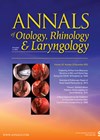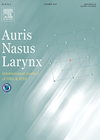
Journal Reviews
Newborn sensorineural hearing loss – what is the incidence?
In the last two decades, the introduction of newborn screening for hearing loss has dramatically lowered the average age of newborn hearing loss diagnosis to around two to three months of age. The benefits of early diagnosis are manifold, enabling...
Clinical Practice Guideline on Tympanostomy Tube in Children Update (AAO-HNS)
The American Academy of Otolaryngology–Head and Neck Surgery Foundation’s ‘Clinical Practice Guideline: Tympanostomy Tubes in Children (Update)’ has been recently published - an update of the original 2013 guideline. This article forms an executive summary to accompany the full guideline....
Valsalva manoeuvre treatment of otitis media with effusion in adults
Otitis media with effusion (OME) is common in children but has a low prevalence in adults. There is some evidence to advocate middle ear inflation as a successful treatment for children with OME. This form of treatment is also recommended...
Treating middle ear conditions in developing countries
This month’s journal issue discussed global health in otolaryngology with this paper focusing on the management of chronic middle ear disease in the developing world. Chronic suppurative otitis media (CSOM) is more common in developing countries. The reason for this...
Does endoscopic tympanoplasty give better results than a conventional approach?
This is a retrospective review looking at two groups of patients who had undergone middle ear surgery for chronic otitis media (perforation, retraction pocket/cholesteatoma) either open or endoscopic. Four hundred and five patients underwent open ear surgery and 501 endoscopic,...
Is there a ‘best’ ventilation tube?
Studies on grommet materials and sizes are not exactly new but this was a well-designed randomized study in Sweden with some useful findings. The extrusion rate and complications associated with four different ventilation tubes (grommets) were assessed prospectively in 400...











